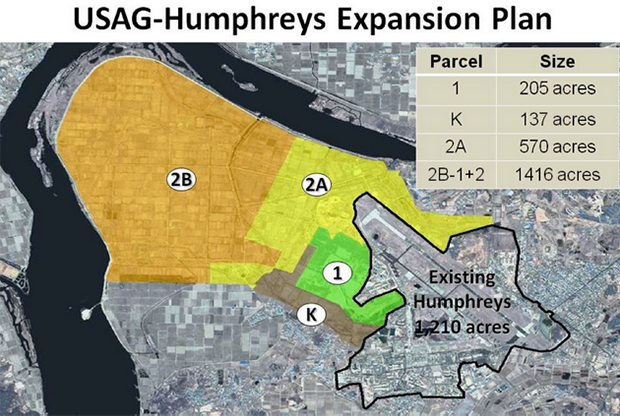What it takes to build DOD networks at scale

As the military consolidates its footprint in South Korea, Col. Mollie Pearson is putting the communications in place.
Building a plane while flying it seems simple compared to the Yongsan Relocation Plan, Land Partnership Plan (YRP/LPP) – the Department of Defense’s largest base-relocation program that “right-sizes” the U.S. and South Korean forces. The project consolidates U.S. forces into two primary hubs -- U.S. Army Garrison Humphreys and USAG Walker -- and involves moving 20,000 people, consolidating 104 posts, camps and stations without disrupting IT services.
Col. Mollie Pearson’s team is responsible for building the network infrastructure to provide data, voice and video to more than 500 buildings at Camp Humphreys. The $828 million project requires the migration of 65 different command, control, communications, computers and intelligence (C4I) systems, a new communications center and roughly 20,000 miles of conduit and cable.
Besides creating a consolidated footprint for U.S. forces, the YRP/LPP project will provide new and enhanced capabilities for the IT transport infrastructure and command centers for the Joint Information Environment, or JIE, which is a shared IT infrastructure and enterprise services designed to increase security and realize IT efficiencies.

As part of the transition to Camp Humphreys, Pearson’s team is tasked with migrating existing systems and services, modernizing existing systems and installing new ones – without affecting current classified and unclassified communications.
Pearson, who is product manager for Power Projection Enablers in the Army’s Program Executive Office Enterprise Information Systems, cited several challenges that such a project presents, including a time zone difference of 12 to 13 hours between the two countries.
The project is also highly visible, Pearson said, as it supports government-to-government agreements critical to both countries’ interests.
“The relationship between these nations is vital to both,” Pearson said. They’re meeting security challenges they face today and “evolving to ensure [they] can meet any potential challenge in the future, together.”
To stay on schedule, Pearson said they don’t do just one large contract, but instead “build (contracts) it in a way so work can be done (and paid for) when all are ready. This saves costs and is a more efficient way of contracting work.”
The team also tries to integrate the C4I side of the project throughout the design, construction, turnover and move in as early as possible, which results in fewer delays, she said. IT work is also contracted in pieces.
“For example, we have an outside plant contract with one industry partner and another partner that will be doing implementation for general facilities and C4I intensive facilities,” Pearson said. “This enables them to integrate their delivery approach and standardize the design to gain efficiencies with costs and schedule.”
Because a trip to South Korea takes about 14 hours, Pearson said she established a forward team in South Korea to help manage the project – a boots on the ground approach that enables the team to manage proficiently and save costs.
“Projects always have their own set of challenges. It is key that projects are actively managed as close to the physical location of the project as possible to minimize such challenges,” Pearson said.
“Merging offices and teams is not an overnight project, especially when there is a significant time zone difference,” she said. “It takes a strong, dedicated, smart team of individuals who have the patience and willpower to overcome challenges inherent with such a task.”
“I’ve found everyone usually has something to offer,” Pearson said. “What’s important is you seek what [people are] good at and put them in that role. Most will amaze you if you put them in the right job.”
NEXT STORY: Detroit drives toward open data





